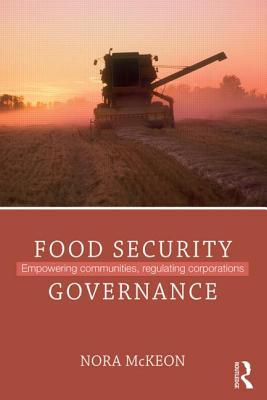(EBOOK PDF) Food Security Governance Empowering Communities Regulating Corporations 1st Edition by Nora Mckeon ISBN 1134695683 9781134695683 full chapters
$50.00 Original price was: $50.00.$35.00Current price is: $35.00.
Food Security Governance: Empowering Communities, Regulating Corporations 1st Edition by Nora Mckeon – Ebook PDF Instant Download/Delivery: 1134695683, 9781134695683
Full download Food Security Governance: Empowering Communities, Regulating Corporations 1st Edition after payment
Product details:
ISBN 10: 1134695683
ISBN 13: 9781134695683
Author: Nora Mckeon
Food Security Governance: Empowering Communities, Regulating Corporations 1st Edition:
This book fills a gap in the literature by setting food security in the context of evolving global food governance.
Today’s food system generates hunger alongside of food waste, burgeoning health problems, massive greenhouse gas emissions. Applying food system analysis to review how the international community has addressed food issues since World War II, this book proceeds to explain how actors link up in corporate global food chains and in the local food systems that feed most of the world’s population. It unpacks relevant paradigms – from productivism to food sovereignty – and highlights the significance of adopting a rights-based approach to solving food problems. The author describes how communities around the world are protecting their access to resources and building better ways of producing and accessing food, and discusses the reformed Committee on World Food Security, a uniquely inclusive global policy forum, and how it could be supportive of efforts from the base. The book concludes by identifying terrains on which work is needed to adapt the practice of the democratic public sphere and accountable governance to a global dimension and extend its authority to the world of markets and corporations.
This book will be of interest to students of food security, global governance, development studies and critical security studies in general.
Food Security Governance: Empowering Communities, Regulating Corporations 1st Edition Table of contents:
Chapter 1: Food Governance
- A rapid historical review
- The 1940s and 1950s: a new multilateral architecture and a bottomless faith in science and technology
- The 1960s and 1970s: institutional global food governance vacillates in the face of a global crisis … and corporations pick up the slack
- From the 1980s up to 2005: triumph of economic globalization and the “free” market … and the emergence of alternatives
- From 2005 on: systemic failure is exposed and the international community faces the food crisis
- Notes
Chapter 2: Food Provision in a Globalized World
- Food systems, chains, and webs: terms and the meanings behind them
- The corporate-led global food system
- Corporate concentration in the food chain
- Financial speculation and price volatility
- The global market
- The corporate food system’s impact on food producers
- Local food webs
- Confronting today’s challenges: which way wins out?
- Notes
Chapter 3: What’s in a Paradigm? Food Security, Food Sovereignty, and Evidence-Based Decision Making
- Ordering facts
- Paradigms in food and agriculture
- Productivism
- Food security
- Food sovereignty
- The right to food
- Gathering and analyzing evidence
- Notes
Chapter 4: Reactions to the Food Price Crisis and the Challenge of Rethinking Global Food Governance
- From intergovernmental process to global governance
- Bringing civil society into the room
- The food sovereignty movement and FAO
- The food price crisis jolts dominant food paradigms …
- … and unveils the deficiencies of global food governance
- International community reactions to the food crisis
- The reformed Committee on World Food Security (CFS)
- Notes
Chapter 5: Local-Global Building Food Governance from the Bottom Up
- Of global and local
- Standardized modernization or diversified local transformation?
- Reasserting the household and the family farm
- Peoples’ access to and control over resources
- Sustainable models of production
- Appropriate markets
- Research and knowledge
- Taking on Goliath
- Building capacity and alliances – who and how?
- Subglobal governance: building upward
- Notes
Chapter 6: Building a Better Food System, from the Top Reaching Downward
- Land grabbing and governance
- The voluntary guidelines on responsible governance of tenure of land, fisheries, and forests in the context of national food security
- From adoption to implementation
- Investment in agriculture and governance
- Investing in smallholder agriculture
- Responsible agricultural investment principles (rai)
- What has and hasn’t been achieved
- Other issues on the CFS agenda
- The Civil Society Mechanism as an innovative interface
- Bringing CFS outcomes home
- A CFS balance sheet
- Notes
Chapter 7: Where to Now?
- Where have we gotten to?
- Why is this time different?
- Revisiting global governance and public/private spheres
- Regulation – hard or soft? Public, private, or hybrid?
- Accountability – by whom to whom, and for what?
- Can we move step by step to big change?
- Values, public goods, human rights, and a touch of desire
People also search for Food Security Governance: Empowering Communities, Regulating Corporations 1st Edition:
what are the 3 pillars of food security
food security equity impact fund
food security envoy
food security government
empowering good governance
Tags:
Nora Mckeon,Food Security,Governance,Empowering,Communities,Regulating,Corporations




